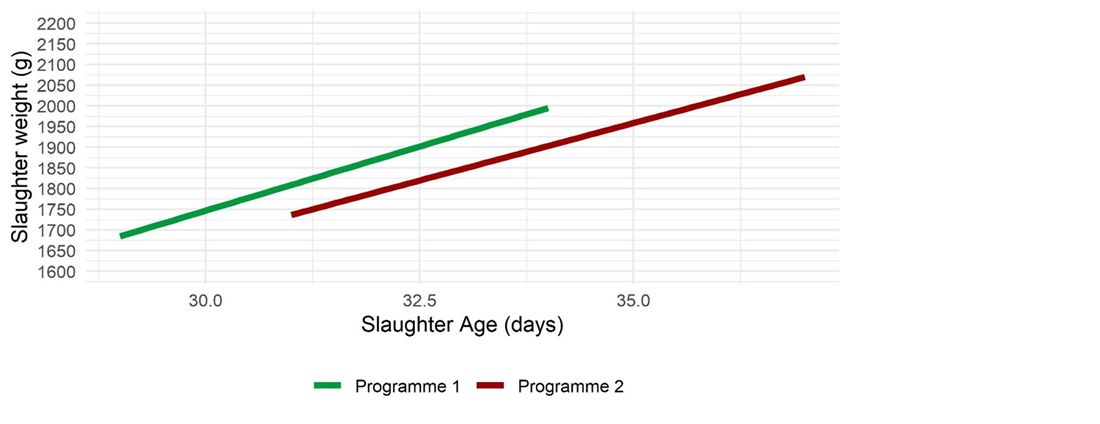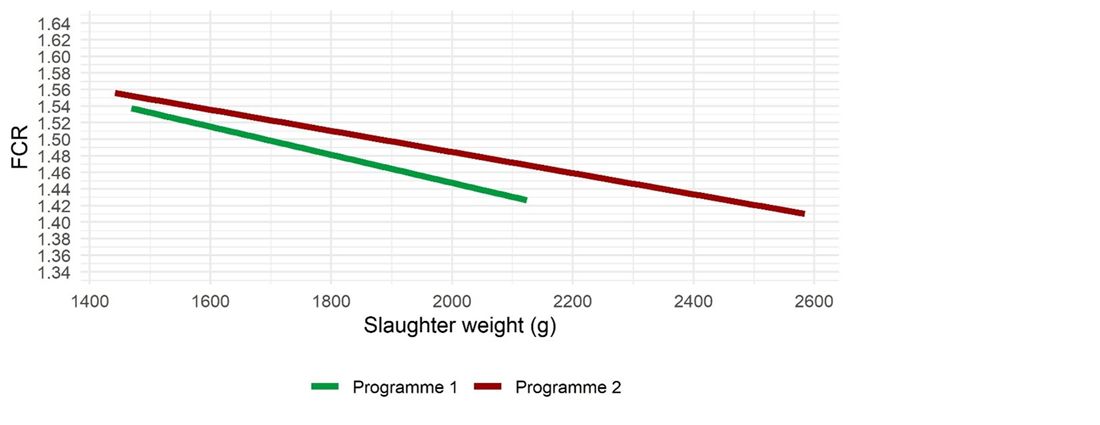To optimise intestinal health, different products and strategies can be used that focus on controlling coccidiosis and optimising the gut microbiome. This study compares two different intestinal health programmes on final slaughter weight, days to market and feed conversion ratio (FCR).
The first programme contained a nicarbazin / monensin combination product (Monimax®) to control coccidiosis and a product containing Bacillus licheniformis (B-Act®) in combination with flavophospholipol (Flavomycin®) to optimise the microbiome (Programme 1). The second programme contained a nicarbazin / semduramicin combination product as well as functional flavours, organic acids, and zinc bacitracin (Programme 2).
The data originated from Aviapp®, the software platform from Huvepharma® which records and analyses data to help optimise poultry performance. There were 204 flocks that followed programme 1 and 218 flocks that followed programme 2. Both programmes were followed in the months of July, August and September but across different years. Programme 1 was given in 2022 and programme 2 was given in 2023.
Flocks on programme 1 reached their target weight 1.8 days earlier (p < 0.001) compared to flocks on programme 2 (Figure 1).

As broilers become older, the percentage of energy needed for maintenance becomes more important, hence the fact that FCR is expected to improve when target weights are reached earlier. The FCR results were adjusted to the average bodyweight of 1.850 kg and the difference between both programmes was 5 points (p < 0.001) in favour of programme 1 (Figure 2).

This study demonstrates that different intestinal health programmes have significantly different performance outcomes, both in days to market and adjusted FCR. The flocks on programme 1 which included nicarbazin / monensin (Monimax®), Bacillus licheniformis (B-Act®) and flavophospholipol (Flavomycin®) had significantly better results.



